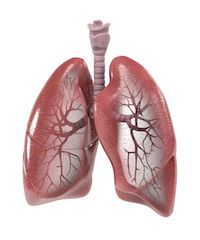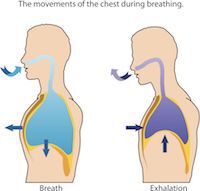
What are breathing techniques?
Breathing techniques are exercises to observe and control your breath, making it a purposeful movement. These techniques can be used with other activities like yoga or tai chi. You can also use these exercises with meditation. Breathing is sometimes grouped with other relaxation techniques like guided imagery and self-hypnosis. These techniques mainly act on the respiratory and nervous system. They will help a wide range of health issues. Since breathing is a part of our everyday life, the different techniques for breathing do not carry many risks for side effects. They are easy to do and can be incorporated into your day as much as you need.
What are breathing techniques good for?
Breathing techniques are easy to do at home, work or school after your doctor gives you some short steps to follow. Conditions for which breathing techniques could help:
- Anxiety
- Anger
- Asthma
- Childbirth, specifically labor pain
- COPD, when used with Tai Chi
- Depression
- High blood pressure, in the short-term
- Insomnia
- Pain
- Stress
- Food Cravings
- Low energy or alertness
Are there any side effects or risks?

Breathing exercises can be very difficult for people with generalized anxiety disorder. Care should be taken if you start to have thoughts that are scary or you lose control. Sometimes people can feel slightly dizzy or lightheaded while doing breathing exercises. If at any time during your breathing techniques you feel distressed, slowly stop the exercise and return to normal breathing.
How do you perform breathing techniques?
There are many different types of breathing techniques. The following are a couple of examples. Talk with your health professional to learn about more techniques.
Technique 1: Abdominal Breathing
Use this technique for relaxation.
Step 1: Place one hand on chest and the other on your stomach.
Step 2: Breath in through your nose for a count of 4. The hand on your stomach should rise higher than the one on your chest. Focus your mind on the part of your nose where the air enters.
Step 3: Exhale for a count of 6-8. Once you have finished exhaling, squeeze your abdominal muscles one time to make sure all the air is out of your lungs.
Step 4: Repeat for a total of 20 breaths. Each breath should take about 10 seconds.
Technique 2: Stimulating Breath (also called the Bellows breath)
Use this technique when you need an energy boost!
Step 1: Keep your mouth closed. Inhale and exhale rapidly through your nose as quickly as possible. It will be noisy.
Step 2: Aim for three in and out breaths per second. Do not do more than 15 seconds total on your first try. Breathe normally after each cycle.
Step 3: Each time you practice, increase your time by 5 seconds until you reach a full minute per cycle or whatever feels comfortable to you. You should feel the effort localized to the back of your neck, stomach, and chest; similar to the way you feel after a workout.
Print Version
References/Resources
Additional Information
National Center for Complementary and Integrative Health
University of Wisconsin Integrative Medicine
References
Carter KS, Carter R. Breath-based meditation: A mechanism to restore the physiological and cognitive reserves for optimal human performance. World J Clin Cases. 2016 Apr 16;4(4):99-102. doi: 10.12998/wjcc.v4.i4.99.
Freitas DA, et al. Breathing exercises for adults with asthma. Cochrane Database Syst Rev. 2013;(10):CD001277.
Gregoski MJ, et al. Breathing awareness meditation and LifeSkills Training programs influence upon ambulatory blood pressure and sodium excretion among African American adolescents. J Adolesc Health. 2011 Jan;48(1): 59-64.
Kemper K, et al. Diaphragmatic breathing reduces exercise-induced oxidative stress. Evid Based Complement Alternat Med. 2011;932430.
Khianman B, et al. Relaxation therapy for preventing and treating preterm labor. Cochrane Database Syst Rev. 2012;(8):CD007426.
Mindfulness Interventions for the Treatment of Post-Traumatic Stress Disorder, Generalized Anxiety Disorder, Depression, and Substance Use Disorders: A Review of the Clinical Effectiveness and Guidelines [Internet]. Ottawa (ON): Canadian Agency for Drugs and Technologies in Health; 2015 Jun 19. Available from: https://www.ncbi.nlm.nih.gov/books/NBK304574/
Ngai SPC, Jones AYM, Tam W. Tai Chi for chronic obstructive pulmonary disease (COPD). Cochrane Database Syst Rev. 2016;(6):CD009953.
Veerabhadrappa SG, Baljoshi VS, Khanapure S, et al. Effect of yogic bellows on cardiovascular autonomic reactivity. Journal of Cardiovascular Disease Research. 2011;2(4):223-227. doi:10.4103/0975-3583.89806.
Zope SA, Zope RA. Sudarshan kriya yoga: Breathing for health. International Journal of Yoga. 2013;6(1):4-10. doi:10.4103/0973-6131.105935.
Patient Education Materials
- Acupuncture
- ADHD
- Allergic Rhinitis
- Anxiety
- Aromatherapy
- Asthma
- Autism
- Back Pain
- Biofeedback Therapy/Training
- Cancer Symptoms
- Chiropractic
- Constipation
- Depression
- Diabetes
- Dyslipidemia
- Eczema
- Elimination Diet
- Fibromyalgia
- GERD
- Headache
- Healthy Diet
- Healthy Weight / Obesity
- Heart Disease
- High Blood Pressure
- Inflammatory Bowel Disease
- Insomnia
- Irritable Bowel Syndrome (IBS)
- Massage Therapy
- Meditation
- Menopause
- Menstrual Disorders
- Osteoarthritis
- Physical Activity
- Probiotics
- Progressive Muscle Relaxation
- Rheumatoid Arthritis
- Supplements
- Tai Chi
- Yoga